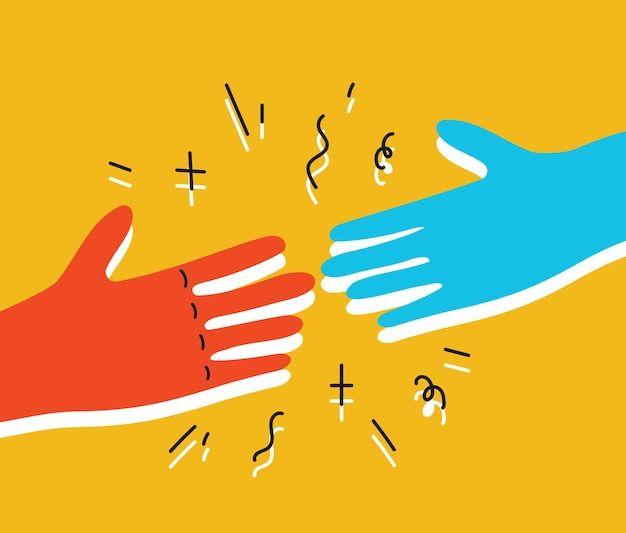Cold-to-Hot Empathy Gap | Why You Don’t Feel What They Feel
Have you ever found yourself thinking, “What’s the big deal?” when someone around you is anxious, or angry? Or maybe you’ve promised yourself, “Next time I’ll stay calm,” only to lose control in the heat of the moment? If yes, you’re not alone. And certainly you’re not heartless or weak. You’re just human. Welcome to the world of the cold-to-hot empathy gap, a psychological blind spot that affects us more often than we realize. It’s the reason we underestimate cravings, overcommit in calm moments, or give poor advice to friends in distress. In this article delight, we’ll explore what this empathy gap really is, why it happens, and how to bridge this gap.
What Is the Cold-to-Hot Empathy Gap?
When individuals are in a calm, neutral (or “cold”) state, they often underestimate or fail to comprehend the intensity of emotions someone might experience in a highly emotional (“hot”) state. This disconnect can lead to poor decisions and a lack of understanding in situations where emotions play a major role. For example, a person who has never experienced an anxiety attack might underestimate what it feels like, offering rational solutions instead of emotional support. Or, a parent might tell their child, “It’s just a scraped knee, stop crying,” forgetting how overwhelming pain can feel to a young child. Or someone might decide in the morning (a cold state) to avoid junk food, but later at night, when they’re tired and stressed (a hot state), they cave in. These moments show how difficult it can be to truly “get” what someone else is feeling when we’re not in the same emotional space.
The reverse of this is called the hot-to-cold empathy gap. This happens when someone is in a highly emotional state and struggles to remember or imagine how they will feel once they’ve calmed down. For instance, when angry during an argument, people often say things they later regret because they can’t foresee their calmer, more rational self. Another example is when someone in intense pain believes it will last forever, making it hard to focus on recovery.
Why It Matters More Than You Think
The cold-to-hot empathy gap isn’t just a quirky psychological glitch. It has real-world consequences:
- In Relationships: We may fail to support partners in distress or misjudge their emotional needs.
- In Parenting: We may lack patience, expecting children to behave rationally when they’re overwhelmed.
- In Decision-Making: We commit to things (like strict diets or confrontations) we can’t follow through on when emotions hit.
- In Health & Policy: Doctors, leaders, and educators may overlook emotional needs when they’re not feeling the same pressure as those affected.
How to Bridge the Empathy Gap | Bridging Cold-to-Hot Empathy Gap
Acknowledge Their Emotions Without Judgment
Instead of trying to fix the problem or dismiss their feelings, start by simply recognizing what they’re experiencing. Saying things like, “I can see you’re really upset right now,” shows you’re tuned in without minimizing their anger. This helps the other person feel heard and less alone in their hot state.
Resist the Urge to Offer Solutions Immediately
When emotions run high, jumping in with advice or solutions often backfires. Give space to their feelings first. Listening patiently can help calm the situation, making it easier for them to eventually consider solutions once they feel understood.
Validate Their Experience Even if You Don’t Agree
You don’t have to share their perspective to recognize their feelings are genuine. Acknowledging their emotions without debate shows respect and helps lower their defensiveness. This simple act of empathy creates a safe space for honest dialogue and understanding.
Give Them Time and Space if Needed
Sometimes the best way to bridge the gap is to step back and let them cool down. Letting someone know you’re there for them but giving them room to process their emotions can prevent escalation. Later, when both are calmer, you can revisit the conversation more constructively.
Final Takeaway | Cold-to-Hot Empathy Gap
The cold-to-hot empathy gap is a natural challenge we all face when emotions run high and understanding feels out of reach. However, by consciously applying the strategies discussed above, you can gradually bridge this gap. It takes patience, practice, and a willingness to step outside your own emotional comfort zone. Over time, these efforts become easier and more intuitive, helping you respond with greater empathy in difficult moments. Overcoming the empathy gap is a skill you develop, not an instant fix. With commitment and care, you make more compassionate connections with the people around you.
Further insights, “Emotional Intelligence” by Daniel Goleman https://amzn.to/3ZycAuS
Read also : How To Deal With Reactive Devaluation | Shift Your Mindset https://thebrightdelights.com/how-to-deal-with-reactive-devaluation/
